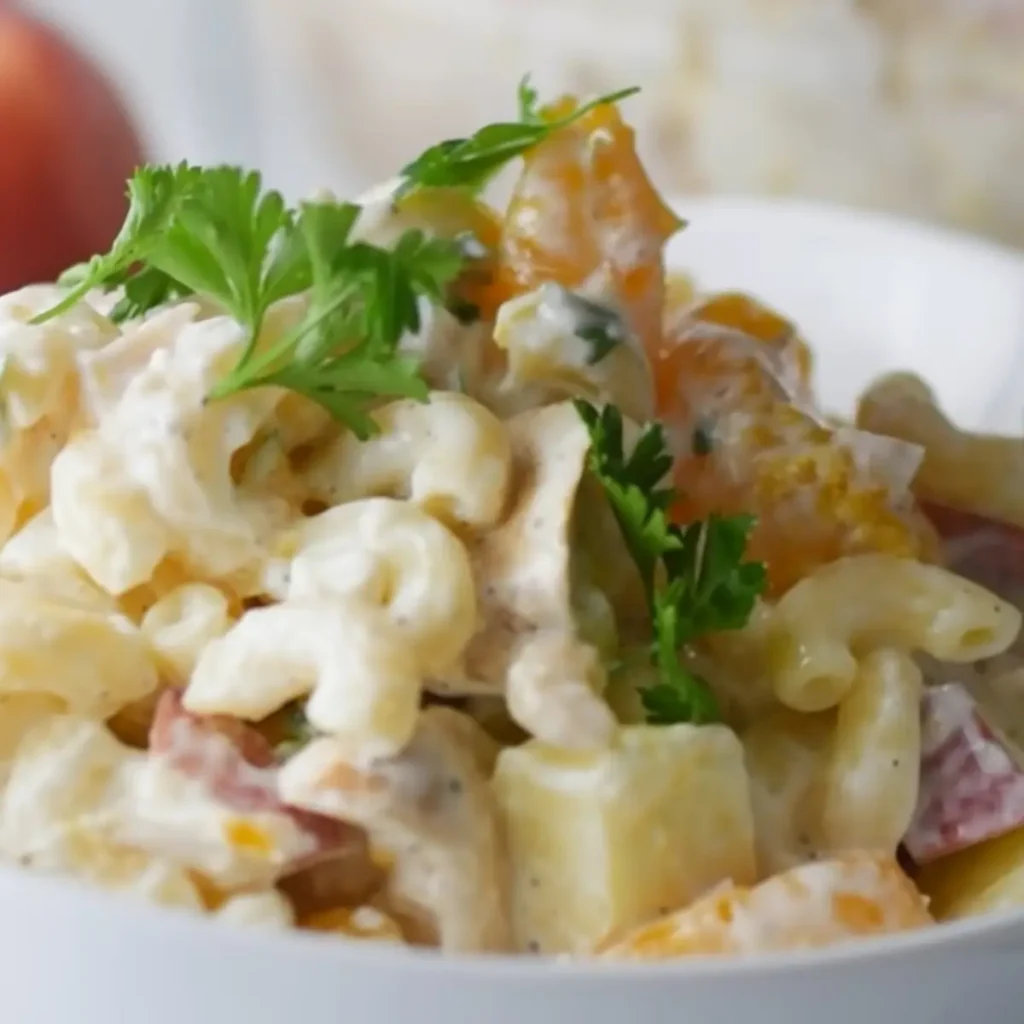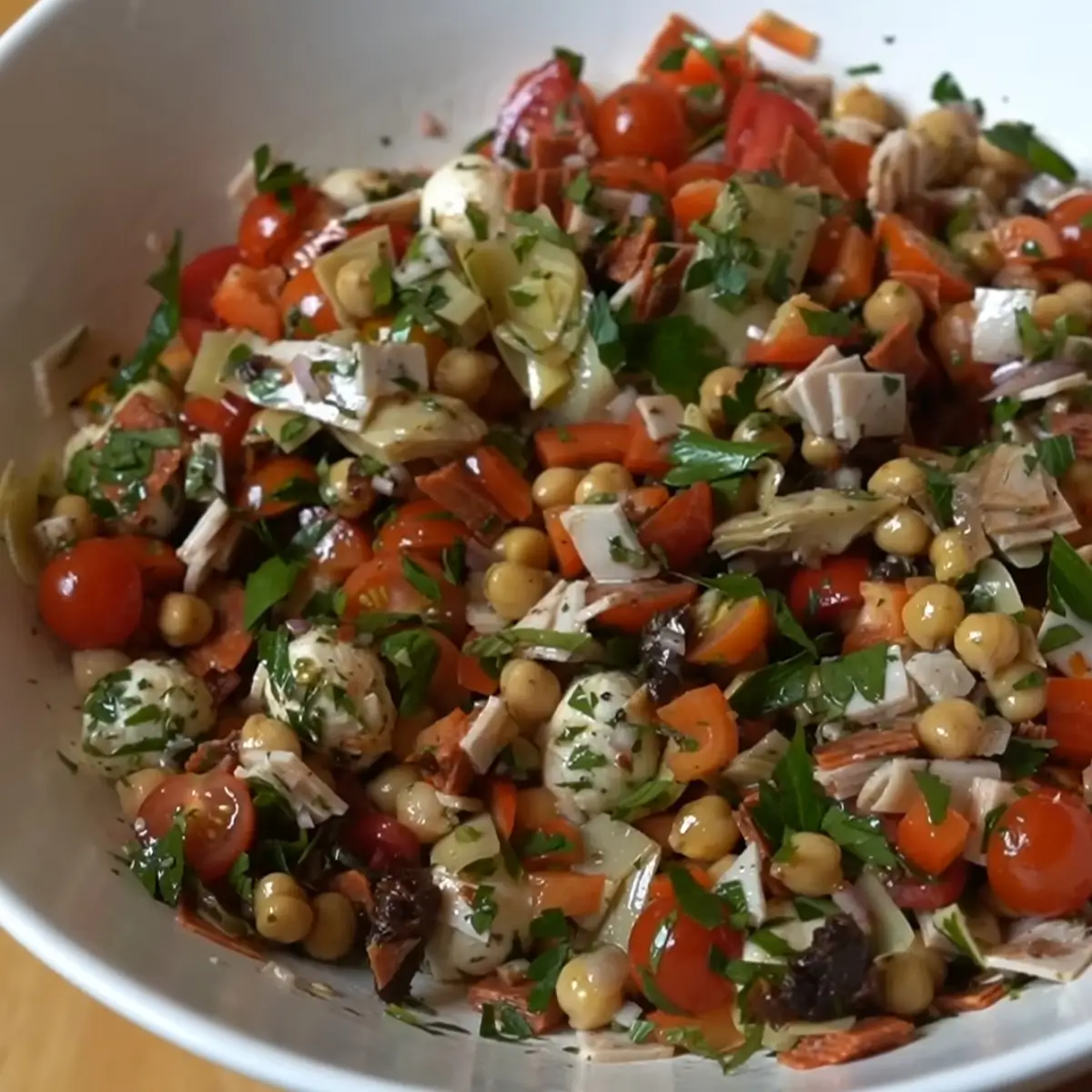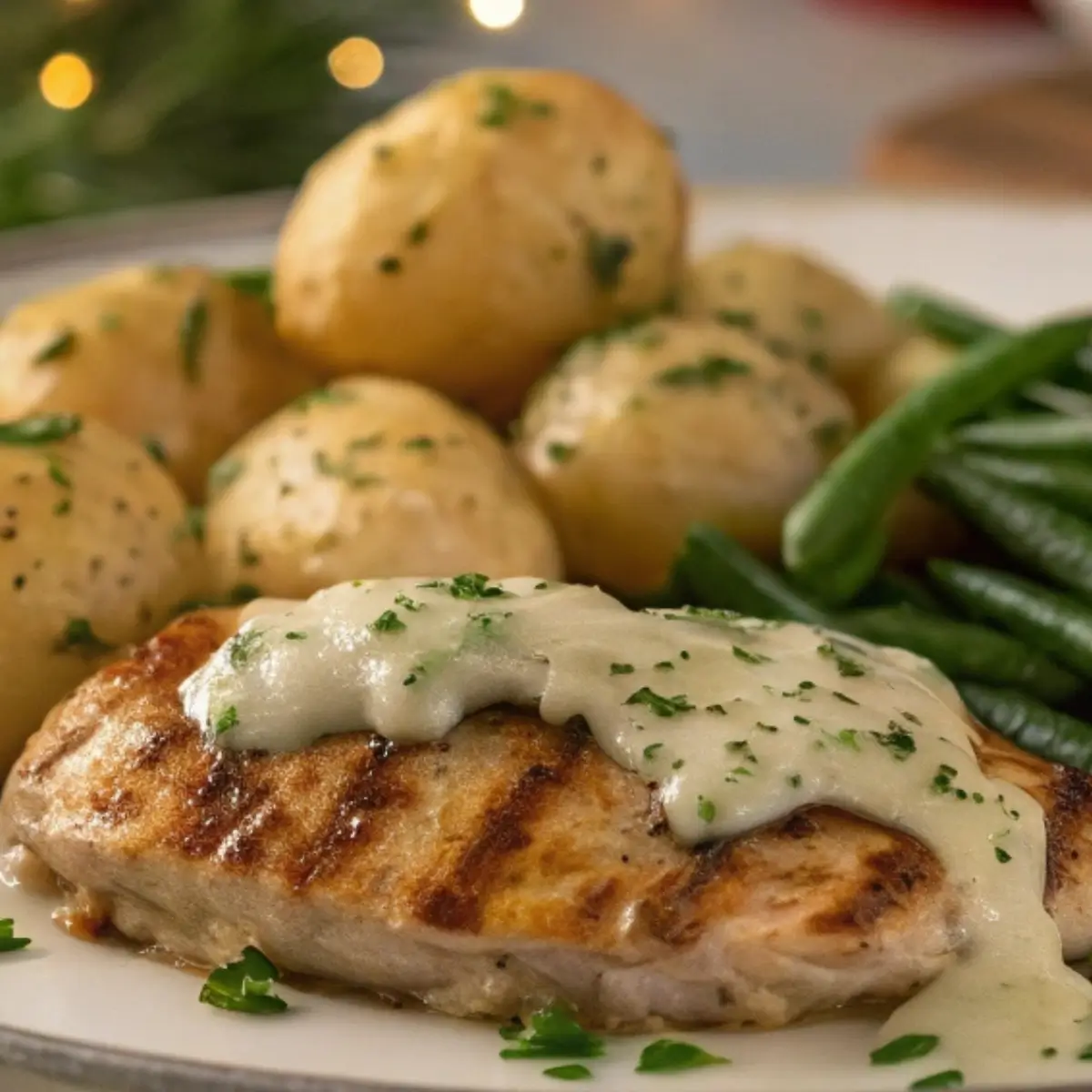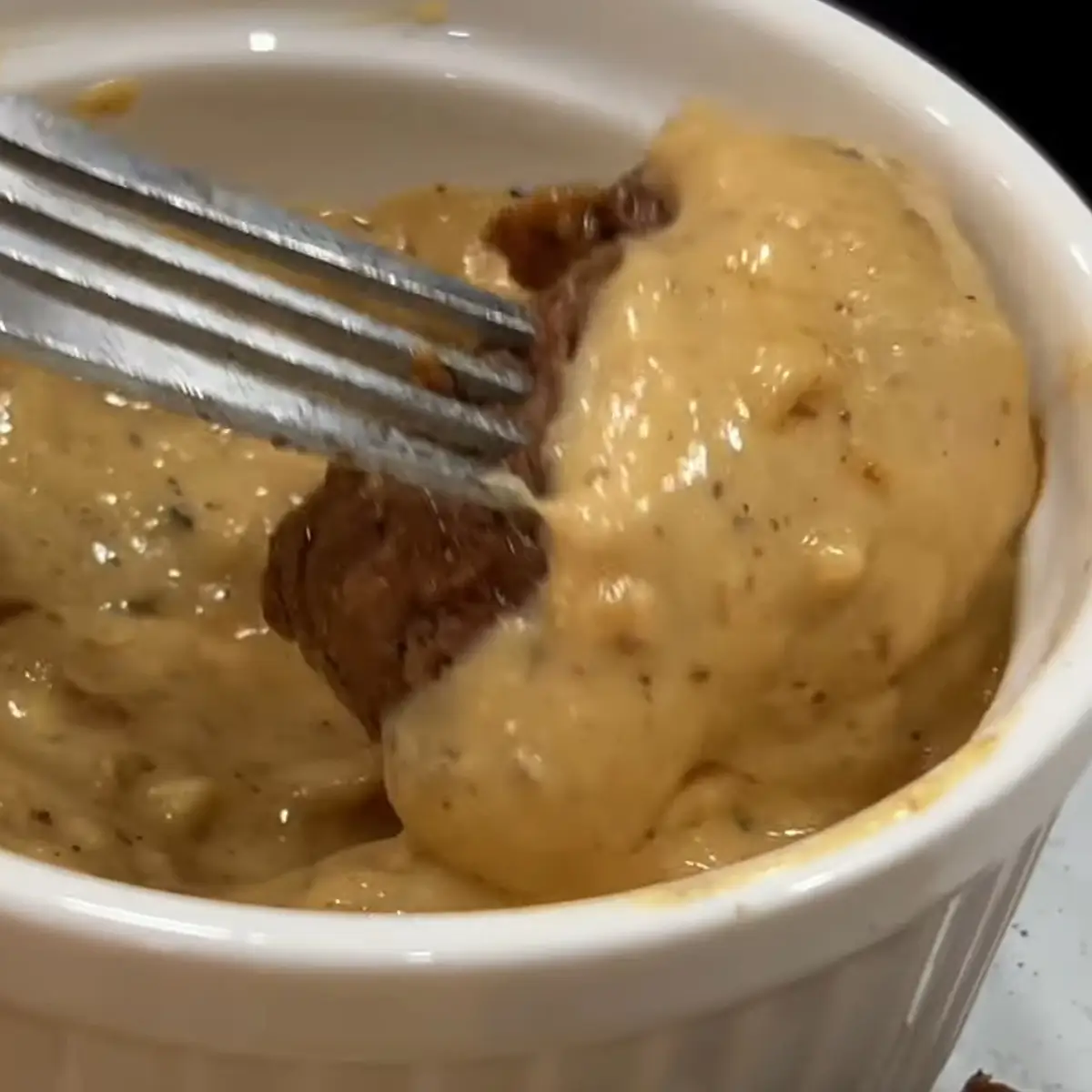I still remember the day my abuela introduced me to the sweet and savory magic of apple macaroni. It was a chilly afternoon, and the scent of sautéed apples and bubbling cheese filled her tiny kitchen like a warm embrace.
“Sweet with the savory“, she whispered, handing me a wooden spoon to stir. That was my first taste of apple macaroni, and it changed the way I understood comfort food.
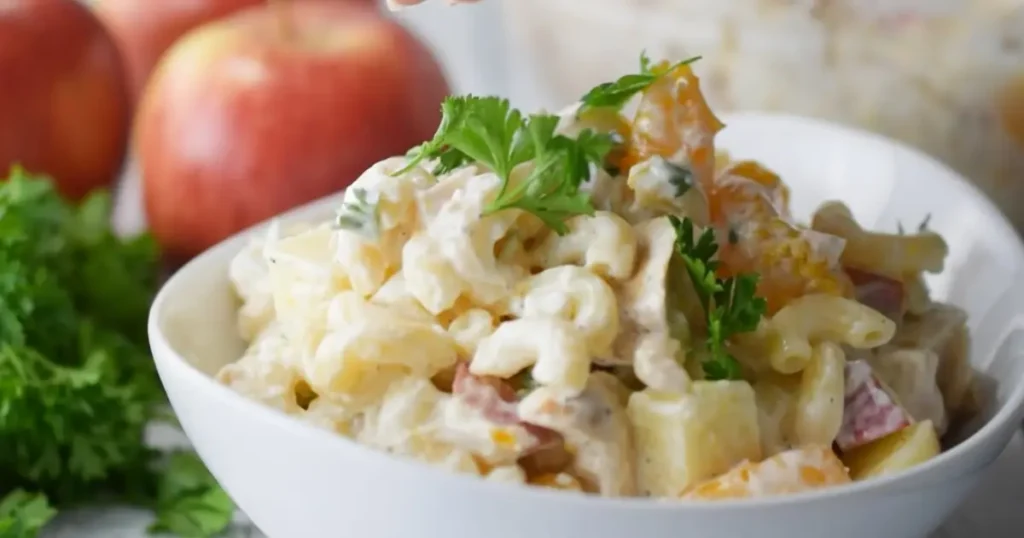
What Is Apple Macaroni?
Definition of Apple Macaroni and Its Flavor Profile
Apple macaroni is a distinctive fusion dish that blends the richness of macaroni and cheese with the natural sweetness and texture of apples. At its core, it incorporates classic elbow macaroni—or any tubular pasta—with diced or thinly sliced apples.
These are cooked into a creamy cheese sauce, often laced with spices like nutmeg, cinnamon, or black pepper to enhance the contrast between sweet and savory notes. The result is a dish that defies simple categorization: it is not quite a dessert, yet more complex than a standard main course.
When prepared well, the apples soften just enough to integrate without losing their shape or subtle tartness. Depending on the apple variety used, the flavor profile can shift—Granny Smith lends a sharp bite, while Red Delicious provides a mellow sweetness.
This duality of taste makes apple macaroni a standout at both casual family dinners and festive seasonal gatherings.
Origins and Culinary Traditions
The roots of apple macaroni are complex and multicultural. In the United States, particularly in the Midwest, variants of apple-infused macaroni have long appeared in community cookbooks and potluck gatherings, often as a creative adaptation of baked macaroni and cheese.
These dishes combine pantry staples like apples, pasta, and cheddar cheese, showcasing an economical yet flavorful solution for feeding families. Simultaneously, Switzerland offers an even older and perhaps more canonical version of apple macaroni—“älplermagronen.”
This rustic Alpine dish combines macaroni, boiled potatoes, cheese, onions, and cream, and is traditionally served with a side of stewed apple compote. Herdsmen in the Alps created it in the 19th century using shelf-stable, easily transportable ingredients.
In both traditions, apples are more than a sweet accent. They provide a balancing acidity and moisture that elevate the entire dish.
Types of Apple Macaroni Dishes
Over time, creative home cooks and chefs have developed several styles of apple macaroni:
- Baked apple macaroni and cheese: Features a crispy topping and hearty layers of cheese and apple slices.
- Apple cheddar macaroni salad: A chilled version ideal for summer, incorporating celery, apples, and a mayo-based dressing.
- Swiss-style älplermagronen: A robust casserole served hot, often with caramelized onions and apple sauce.
- Apple bacon macaroni: A smoky-sweet combination where Granny Smith apples offset the saltiness of bacon.
- Apple sausage macaroni: A complete meal in one dish, using cooked sausage slices and herbed apple chunks.
These variations underscore how versatile apple macaroni can be, adapting to cultural tastes and seasonal ingredients.
Apple Macaroni Recipes Across Cultures
Baked Apple Macaroni & Cheese (Elbow Pasta + Red Delicious Apples)
When I moved into my first apartment, I wanted to surprise my aunt with something warm and nostalgic. She used to bring a version of baked macaroni to every Sunday dinner. I put a twist on hers with diced Red Delicious apples folded into the gooey cheese sauce.
It came out bubbling and golden, with the apples melting slightly but retaining enough shape to offer a gentle crunch. This version of apple macaroni uses elbow pasta, a rich homemade béchamel sauce with sharp cheddar, and thinly sliced or cubed Red Delicious apples.
Before baking, a layer of breadcrumbs—sometimes mixed with grated parmesan—is sprinkled on top to form a crunchy crust. The cheese sauce acts as a rich counterpoint to the apples’ sweetness, while baking melds all the flavors into a comforting casserole.
Apple Cheddar Macaroni Casserole (U.S. Apple Association Favorite)
This variation comes highly recommended by the U.S. Apple Association and highlights the affinity between cheddar cheese and apples. It begins similarly to the baked version but often incorporates a touch of Dijon mustard and sour cream to add complexity and depth.
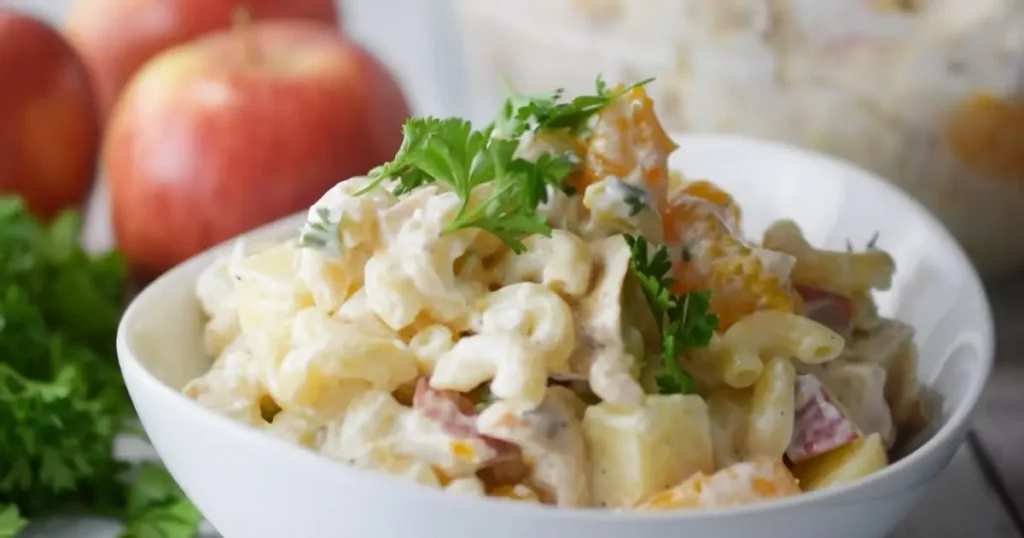
Sliced tart apples like Pink Lady or Gala are preferred, as they retain their shape during cooking and balance the sharpness of aged cheddar. This casserole is usually baked uncovered to allow a chewy, caramelized top to develop, making each bite texturally dynamic.
Swiss-Style Älplermagronen with Apple Compote
I learned about älplermagronen from a Swiss neighbor who hosted us for dinner one snowy December. The combination of pasta, boiled potatoes, onions, and Gruyère cheese, all bathed in cream and served with sweet apple compote on the side, was unlike anything I had tasted before.
In this Alpine tradition, apple macaroni is not sweetened during cooking but paired with apples served separately. The compote—typically made with Granny Smith or Boskoop apples—is simmered until tender and gently mashed. The sweet-tart compote cuts through the dish’s richness and creates a harmonious balance.
Apple Bacon Macaroni and Cheese
This recipe is one of my personal favorites. It starts with sautéing diced Granny Smith apples in bacon fat until they caramelize slightly. Then I add cooked macaroni and a cheese sauce made with a blend of smoked Gouda and sharp cheddar.
The crumbled bacon is folded in at the end, and the entire mixture is baked for 20 minutes until bubbling and crisp on top. The smokiness from the bacon and the tang from the apples work together beautifully, making this one of the more flavorful apple macaroni interpretations.
These recipes, drawn from different corners of the globe, prove that apple macaroni is not a novelty but a diverse and cherished culinary phenomenon.
Key Ingredients in Apple Macaroni
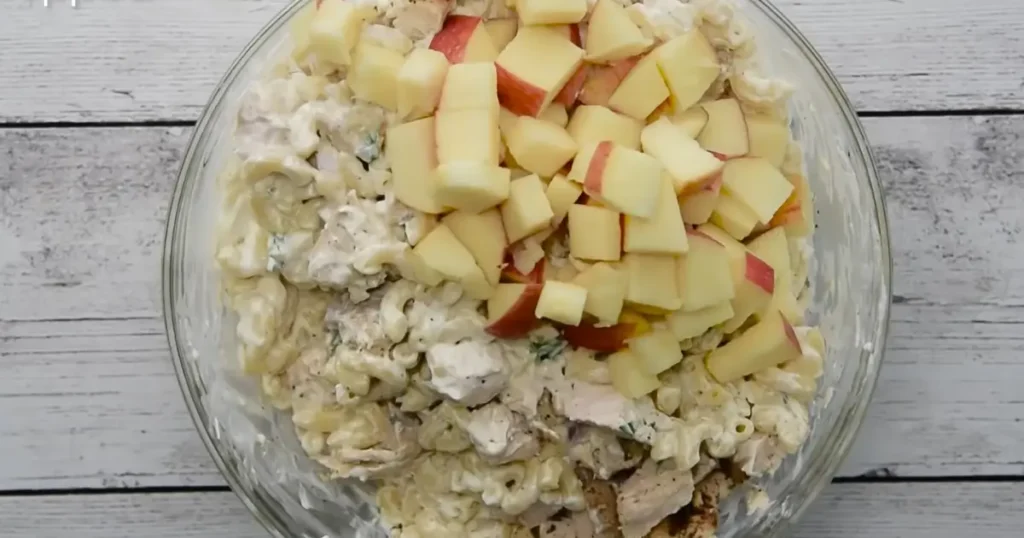
Choosing the Best Pasta (Macaroni, Ziti, Penne) – Shapes and Cooking Tips
In my kitchen, pasta selection is not an afterthought. The shape you choose can determine how the cheese and apple pieces cling to the surface. For apple macaroni, tubular varieties like elbow macaroni, ziti, penne, or even cavatappi are best. Their hollow centers catch melted cheese and bits of softened apple, offering a more flavorful bite.
I find that cooking the pasta until it is just barely al dente is crucial. It will continue to cook when baked or mixed into a warm cheese sauce, and overcooked pasta can turn the whole dish mushy. Also, rinsing the pasta is unnecessary and actually removes the starch that helps sauce adhere to the noodles.
Apples – Varieties and Preparation Tips (Gala, Granny Smith, Red Delicious, Michigan Red)
The apples are the star that gives apple macaroni its character. I often use Granny Smith apples for their tartness and firm texture, which stands up well to heat. Red Delicious and Michigan Red apples offer a softer bite and more sweetness, making them perfect for a gentler flavor profile.
Always peel and core your apples. Then dice them into half-inch cubes or thin slices depending on your texture preference. If you want some crunch, do not sauté them beforehand. If you prefer them tender and integrated, a quick cook in butter or bacon fat will do wonders.
Cheese Choices (Cheddar, Gouda, Gruyère, Appenzeller, Muenster)
Choosing the right cheese is like selecting the melody to complement the apples’ rhythm. Sharp cheddar is the classic choice and balances sweetness effectively. Smoked Gouda or creamy Muenster adds richness. For a more European flavor, Gruyère or Appenzeller bring nutty, earthy notes.
Use freshly grated cheese whenever possible. Pre-shredded cheeses often contain anti-caking agents that prevent smooth melting and compromise the dish’s silkiness.
Add-ins: Bacon, Sausage, Onion, Hard Cider, Spices
Here is where your personal taste can shine. Add crispy bacon for saltiness or browned sausage for heartiness. Caramelized onions lend sweetness and depth. A splash of hard cider brings complexity and enhances the apple flavor. Nutmeg, black pepper, and even a touch of mustard can round out the flavor profile.
Experiment within your comfort zone, and you may discover your perfect version of apple macaroni.
How to Make Apple Macaroni at Home
Step One – Prep Pasta and Apples: Timing to Keep Apples Crisp
One evening, I was cooking for my cousin’s birthday, and I wanted the apples in my macaroni dish to still have that gentle bite—crisp but tender. I discovered that timing was everything. I started by cooking the pasta until it was al dente, and while it boiled, I chopped the apples and soaked them briefly in a mix of lemon juice and cold water. This kept them from browning and helped retain their structure during cooking.
Choose a pasta like elbows or cavatappi and boil it in well-salted water for about 7-8 minutes—just enough so it still has a firm core. At the same time, peel and core your apples. Dice them evenly so they cook uniformly. Once the pasta is drained, do not rinse it. Set both aside, prepping you for the next step.
Step Two – Create the Cheese Sauce (Roux-Based, Cider Infusion)
Now comes the heart of the dish—the cheese sauce. I start by melting butter in a heavy-bottom saucepan, then whisking in equal parts flour to create a roux. This base thickens the sauce without becoming too heavy. Slowly, I pour in warm milk or half-and-half, whisking constantly to avoid clumps.
Here’s my twist: I add a splash of hard apple cider, about 1/4 cup. It deepens the apple flavor without overwhelming the cheese. Once the sauce thickens to coat the back of a spoon, I reduce the heat and stir in freshly grated cheddar and a touch of Gruyère. I season with salt, pepper, and just a dash of nutmeg.
Step Three – Combine Pasta, Apples, Sauce, Add-ins
With everything prepped, I mix the drained pasta, raw or lightly sautéed apple pieces, and cheese sauce in a large bowl. This is the moment to add in extras: caramelized onions, crisp bacon, or sausage if you like. Stir gently to coat without mashing the apples.
Let the mixture rest for 5 minutes. This allows the cheese to bind and the flavors to integrate. Taste and adjust seasoning if necessary—sometimes a pinch more salt or a drop of cider sharpens everything.
Step Four – Bake or Stovetop Finish (Topping with Panko, Broil Options)
For a traditional baked version, I pour the mix into a greased baking dish. I sprinkle panko breadcrumbs, a bit of melted butter, and some extra shredded cheese on top. Bake at 375°F (190°C) for 20–25 minutes until golden. For extra crispiness, I place it under the broiler for the last 2–3 minutes.
If you are short on time, a stovetop finish works too. Let it simmer on low in a covered pot for 10 minutes, then uncover and stir until the sauce thickens slightly. It is creamy, quick, and satisfying.
Step Five – Serving Suggestions: Sides, Temperature, Storage
I love serving apple macaroni hot with a side salad of arugula, nuts, and balsamic glaze. Pickled vegetables or apple compote also pair beautifully, especially if you are going the Swiss route.
Let leftovers cool fully before storing. Refrigerate in an airtight container for up to 4 days. It reheats best in the oven at 350°F for 15–20 minutes. You may need to add a splash of cream to loosen it up.
This method gives you not only a balanced, flavor-rich meal but also one that reheats well and feeds a crowd. Whether you are hosting a holiday or just comforting yourself on a quiet night, this dish delivers warmth and satisfaction in every bite.
Variations & Creative Twists on Apple Macaroni
Apple Sausage Macaroni Casserole with Cider and Sage
Last autumn, when I was hosting a harvest dinner, I decided to give apple macaroni a rustic makeover. I browned some sage sausage, added diced apples, and used a splash of apple cider to bring out the fall flavors. The result? A warm, satisfying casserole that had guests asking for seconds—and the recipe.

This version incorporates cooked Italian or chicken sausage with sautéed apples, a creamy cheese sauce, and fusilli or elbow pasta. Fresh sage is key—it infuses the dish with an earthy, herbaceous aroma that balances the richness of the cheese.
Baked in a deep casserole dish until golden and bubbling, this twist is perfect for holiday tables or cool evenings when you crave something hearty.
Caramelized Onion Apple Mac and Cheese
When I visited my friend’s farm in Vermont, we made dinner from what was on hand. That night, it was sharp white cheddar, sweet onions, and Macintosh apples. We cooked the onions low and slow until they were deeply golden, then folded them into mac and cheese along with sautéed apples. It was sublime.
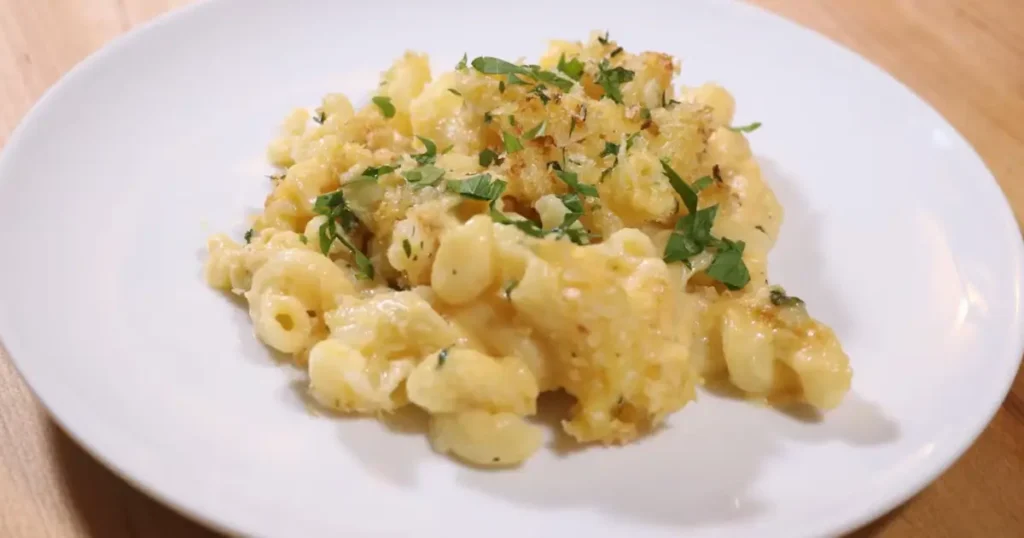
Inspired by that meal, this variation builds deep flavor using caramelized onions. Slice onions thinly and cook in butter over medium-low heat for at least 30 minutes.
Combine with crisp-tender apples and a Gruyère-based cheese sauce. The dish is elegant enough for guests, yet comforting enough for a solo weeknight dinner.
Tuna Apple Macaroni Salad – A Lighter, Savory Sweet Spin
My neighbor Maria once brought a macaroni salad to our neighborhood cookout that surprised everyone. It had apples and canned tuna—light, zesty, and unexpectedly delightful. Since then, I make a version that has become a picnic staple.
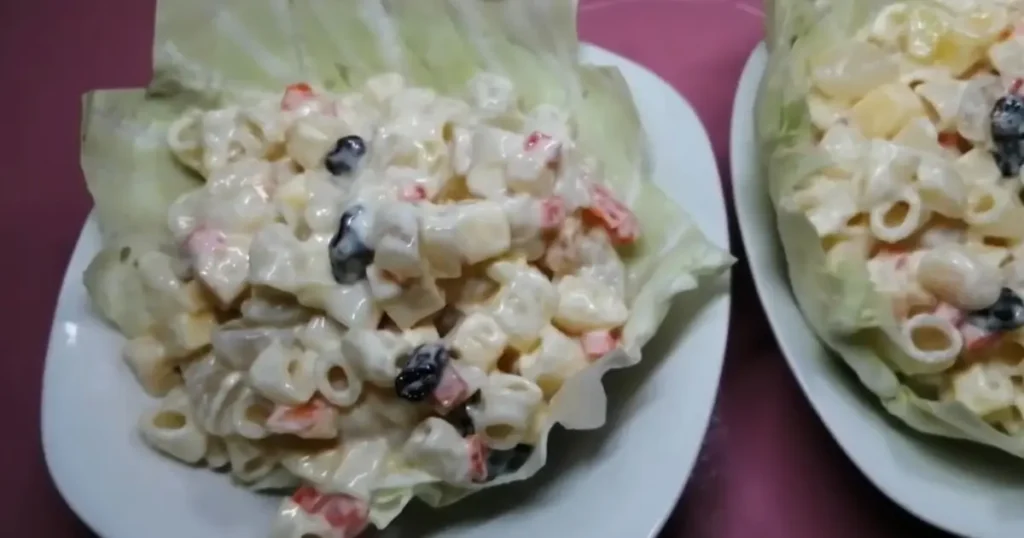
Use cooked elbow pasta, drained tuna, diced apples (Gala or Pink Lady), red onions, celery, and a mayo-yogurt dressing. Season with lemon juice, salt, and pepper. Serve chilled. It is a refreshing, protein-packed take on apple macaroni that works beautifully in warmer months.
Customized Add-Ons: Herbs, Smoked Meats, Breadcrumbs
One of the joys of apple macaroni is how adaptable it is. Here are a few flavorful enhancements to try:
- Herbs: Fresh thyme, sage, or rosemary for depth
- Smoked meats: Ham, pancetta, or turkey bacon for umami
- Breadcrumbs: Seasoned panko or crushed crackers for crunch
- Spices: Cayenne, paprika, or mustard powder to elevate complexity
With these creative tweaks, your apple macaroni can go from a traditional comfort dish to something truly gourmet.
Healthy Tweaks & Dietary Alternatives
Gluten-Free Apple Macaroni Options – GF Pasta, Flour Substitutes
My cousin was recently diagnosed with celiac disease, and during a family gathering, I adapted my classic apple macaroni to be entirely gluten-free. I used chickpea-based elbow pasta and thickened the cheese sauce with a gluten-free flour blend. Not only did she love it, but the rest of the table could not even tell the difference.
For a gluten-free version, substitute traditional pasta with certified gluten-free options such as brown rice pasta, lentil pasta, or quinoa-based varieties. To thicken the sauce, gluten-free all-purpose flour or cornstarch works well. Always check labels on pre-shredded cheese and packaged ingredients to ensure there is no cross-contamination.
Lower-Fat Dairy Swaps – Half and Half, Light Cream, Low-Fat Cheese
Health-conscious family members often request a lighter take on mac and cheese. I have found that using half-and-half instead of heavy cream, and reducing the cheese by blending full-fat with part-skim varieties, results in a creamy but less indulgent dish.
Low-fat cheddar and reduced-fat mozzarella work well if melted properly. Adding a bit of low-sodium chicken broth can stretch the sauce while retaining flavor. Greek yogurt, stirred in at the end, adds creaminess and a slight tang without excess fat.
Vegetarian & Meat-Free Versions – Omit Bacon/Sausage, Add Veggies
When my vegetarian aunt visited last year, I made apple macaroni without any meat and loaded it with roasted vegetables instead. It turned out vibrant and delicious.
Try omitting bacon or sausage and adding caramelized mushrooms, roasted squash, or sautéed kale. These ingredients provide umami and balance the sweetness of the apples. Use vegetable broth and ensure cheese selections are rennet-free to keep it fully vegetarian.
Healthier Apple Choices and Reducing Added Sugars
For a more health-conscious twist, choose apples with lower sugar content such as Granny Smith or Braeburn. Avoid sweetened apple products or sauces. Instead, let the natural fruit flavor shine.
Avoid adding brown sugar or sweet glazes—especially if the dish is already rich in dairy. Focus on using whole ingredients, moderate cheese, and unprocessed additions. This keeps the dish satisfying yet aligned with more balanced eating habits.
Apple Macaroni in Meal Planning & Entertaining
Warm Comfort Food for Fall/Winter Gatherings
The first time I served apple macaroni at our annual fall potluck, my neighbor—who usually brings her signature chili—declared it the most memorable dish of the evening. It is the kind of meal that feels like a hug in a bowl: warm, filling, and full of nostalgic flavor.
This dish is ideal for colder months. Apples are in season, the oven’s warmth feels welcoming, and rich, cheesy pasta is everyone’s go-to comfort. Whether you serve it as a main course or a unique side, its sweet-savory profile adds balance to any seasonal spread. Add cinnamon-spiced cider or mulled wine, and you have a full autumnal feast.
Make-Ahead Strategies and Reheating Tips (Bake Covered, Crisping)
Whenever I host a dinner party, I rely on make-ahead recipes to stay sane—and apple macaroni is a lifesaver. I assemble everything a day in advance, cover the dish with foil, and refrigerate it.
To reheat, I bake it at 350°F (175°C) for 25–30 minutes covered, then uncover and bake an additional 10 minutes to get that golden crust. If it looks dry, I drizzle a bit of milk or cream before heating. It also freezes well—just let it cool completely before sealing.
Pairings: Salads, Pickles, Autumn Drinks
Pair this dish with:
- Peppery arugula salad with apple vinaigrette
- Pickled beets or gherkins for tang
- Warm crusty bread or cornbread
- Spiced apple cider or dry white wine
These sides complement the richness of the macaroni and enhance its sweet-savory complexity.
Portioning for Crowds vs. Family Meals
When cooking for a crowd, I double the recipe and use a large roasting pan. For a small family meal, a standard 9×9 inch dish is more than enough. A typical batch serves 4–6 generously. You can also divide the dish into ramekins for personal portions—perfect for meal prepping or hosting a dinner with flair.
FAQs About Apple Macaroni Recipe
What is apple macaroni and why are apples added to mac and cheese?
When people first hear about apple macaroni, they often ask, “Why apples in mac and cheese?” The answer lies in balance. Apples, especially tart varieties like Granny Smith, introduce acidity and sweetness that contrast the richness of melted cheese. This combination enhances the dish’s flavor complexity.
Incorporating apples creates a multi-dimensional profile: creamy, tangy, sweet, and savory. It turns a traditional comfort food into a more vibrant and memorable meal. In both American and Swiss kitchens, apples are used not to dominate but to elevate.
What is älplermagronen made of and how is it related to apple macaroni?
Älplermagronen is a traditional Swiss dish often considered a predecessor or cousin to apple macaroni. The dish consists of macaroni pasta, diced potatoes, onions, cream, and a blend of cheeses like Gruyère. It is commonly served with a side of apple compote.
The apple component is typically a sweet puree rather than integrated into the pasta itself. Nonetheless, the use of apples in tandem with creamy pasta establishes a clear connection. Modern apple macaroni recipes often borrow from älplermagronen’s layered textures and flavor contrasts.
How do you doctor up macaroni for flavor and texture?
Customizing macaroni to suit personal taste is easy. To enhance apple macaroni, consider the following:
Add caramelized onions for sweetness and depth
Mix in Dijon mustard or a splash of apple cider for acidity
Top with seasoned panko or crushed walnuts for crunch
Use smoked cheeses or spice blends like paprika and cayenne for complexity
These enhancements can take the dish from basic to gourmet with minimal effort.
What is in Gordon Ramsay’s mac and cheese? (Compare approach without apples)
Gordon Ramsay’s mac and cheese typically includes pasta, milk, cheddar cheese, and a béchamel base. Sometimes he adds pancetta, leeks, or truffle oil, focusing on indulgence and luxury.
His approach does not traditionally include fruit or sweetness, which sets it apart from apple macaroni. Ramsay’s version emphasizes richness and texture, whereas apple macaroni uses contrast—sweet and savory—to deliver balance and novelty.
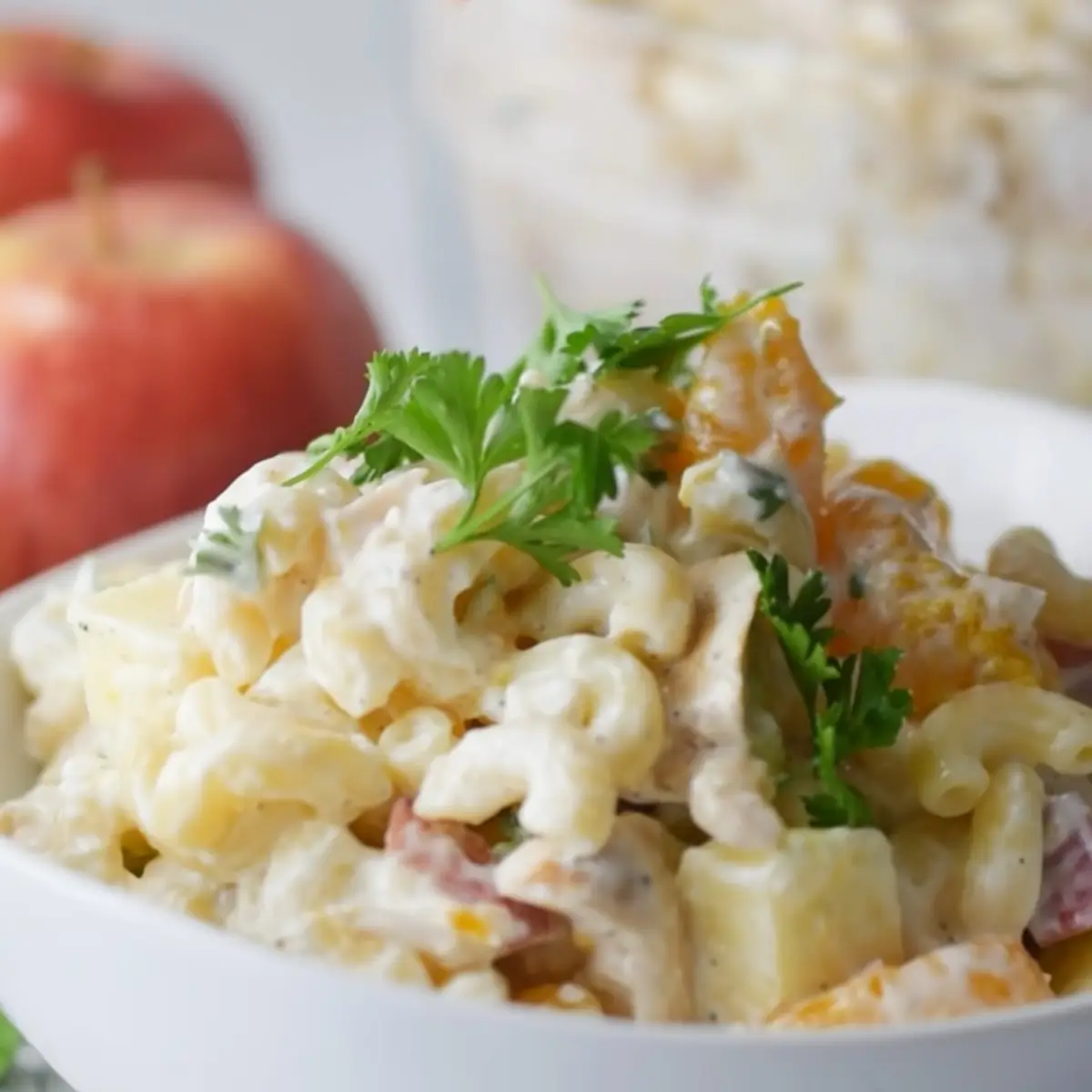
Apple Macaroni (Sweet and Savory Baked Macaroni and Cheese)
Ingredients
Equipment
Method
- Preheat oven to 375°F (190°C). Lightly grease a 9×9 inch baking dish.
- Cook macaroni in salted boiling water until just al dente. Drain and set aside.
- Toss diced apples with lemon juice and set aside.
- In a saucepan, melt butter and stir in flour to form a roux. Cook for 2 minutes.
- Slowly whisk in milk (and cider, if using). Simmer until thickened.
- Stir in grated cheeses, nutmeg, salt, and pepper. Cook until melted and smooth.
- In a large mixing bowl, combine pasta, apples, cheese sauce, and optional bacon/onions. Mix gently.
- Pour into prepared baking dish. Top with panko mixed with melted butter.
- Bake for 25–30 minutes or until golden and bubbly.
- Let rest for 5 minutes before serving. Serve with arugula salad or apple compote.

